2.1 Definition:
2.2 Steps for Selection Sort:
2.3 Below is the pseudo code for the same:
for i <- 0 to n-1
pos <- i
for j <- i+1 to n-1
if (arr[j] < arr [pos])
pos = j;
end for of j
swap arr[i], arr[pos];
end for of i.2.4 Understanding Selection Sort with an example
Consider the array: [4, 6, 1, 34, 21, 14]
Pass 1:
Initially, we need to fill the index 0, with the smallest element. We first check the array. We see that 1 is the least element and it is in index 2. Hence swap at index 0 and index 2. Below is the result.
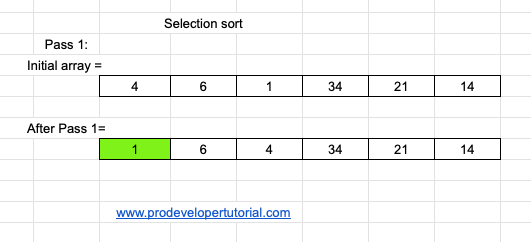
Pass 2:
As we have already placed lowest element in index 0, now we need to place 2nd lowest element.
From the array we can see that 4 is the 2nd lowest element. Hence swap the elements at index 1 and index 2, as shown below:
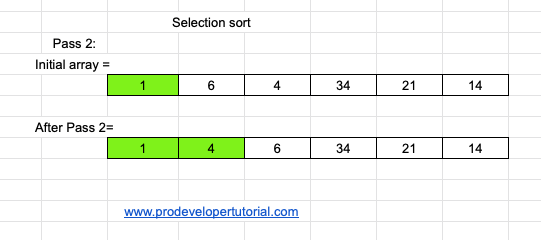
Pass 3:
At pass 3, we can see that element 6 is in it’s correct position. Hence we don’t do anything in this pass.
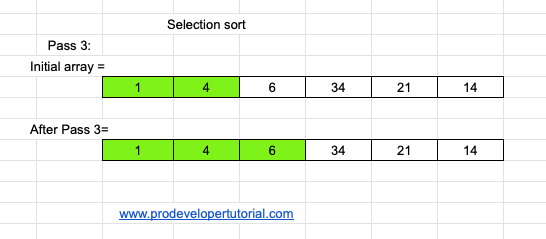
Pass 4:
At pass 4, we swap the elements 34 and 14.
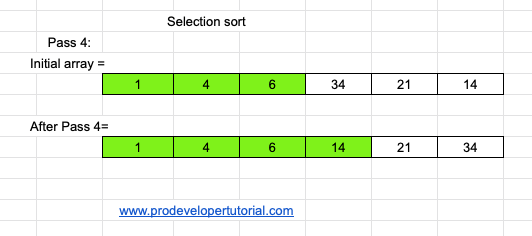
Pass 5 :
As you can see that the array is already sorted. Hence we do nothing.
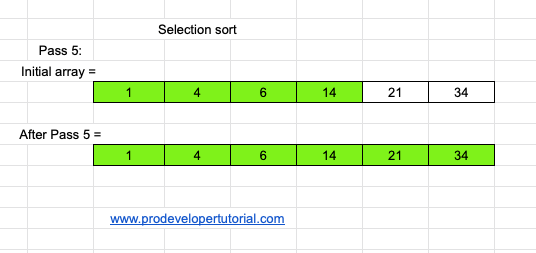
2.5 Implementation of Selection Sort in C
#include<stdio.h>
void print_array(int array[], int length)
{
int index = 0;
printf("The sorted array is \n");
for(index = 0 ; index < length ; index++)
{
printf("%d\n",array[index] );
}
}
void swap (int *num_1, int *num_2)
{
int temp = *num_1;
*num_1 = *num_2;
*num_2 = temp;
}
void selection_sort (int array[], int length)
{
int outer_loop_index = 0;
int inner_loop_index = 0;
int position = 0;
for(outer_loop_index = 0; outer_loop_index < length - 1; outer_loop_index ++)
{
position = outer_loop_index;
for(inner_loop_index = outer_loop_index+1 ; inner_loop_index < length ; inner_loop_index ++)
{
if(array [inner_loop_index] < array[position])
{
position = inner_loop_index;
}
}
swap(&array[outer_loop_index], &array [position]);
}
}
int main()
{
int length = 0;
int array[100];
int index = 0;
printf("Enter the length of the array\n");
scanf("%d", &length);
printf("Enter the array elements of length %d\n", length);
for (index = 0; index < length; ++index)
{
scanf("%d", &array[index]);
}
selection_sort(array, length);
print_array(array, length);
}
2.6 Output of the program
Enter the length of the array
5
Enter the array elements of length 5
5
4
3
2
1
The sorted array is
1
2
3
4
52.7 Time complexity analysis of Selection Sort
As we are comparing the elements as:
(n-1) + (n-2) + . . . . + 2 + 1
(n(n-1))/2
O(n^2)Here Best case, worst case, average case is O(n^2).